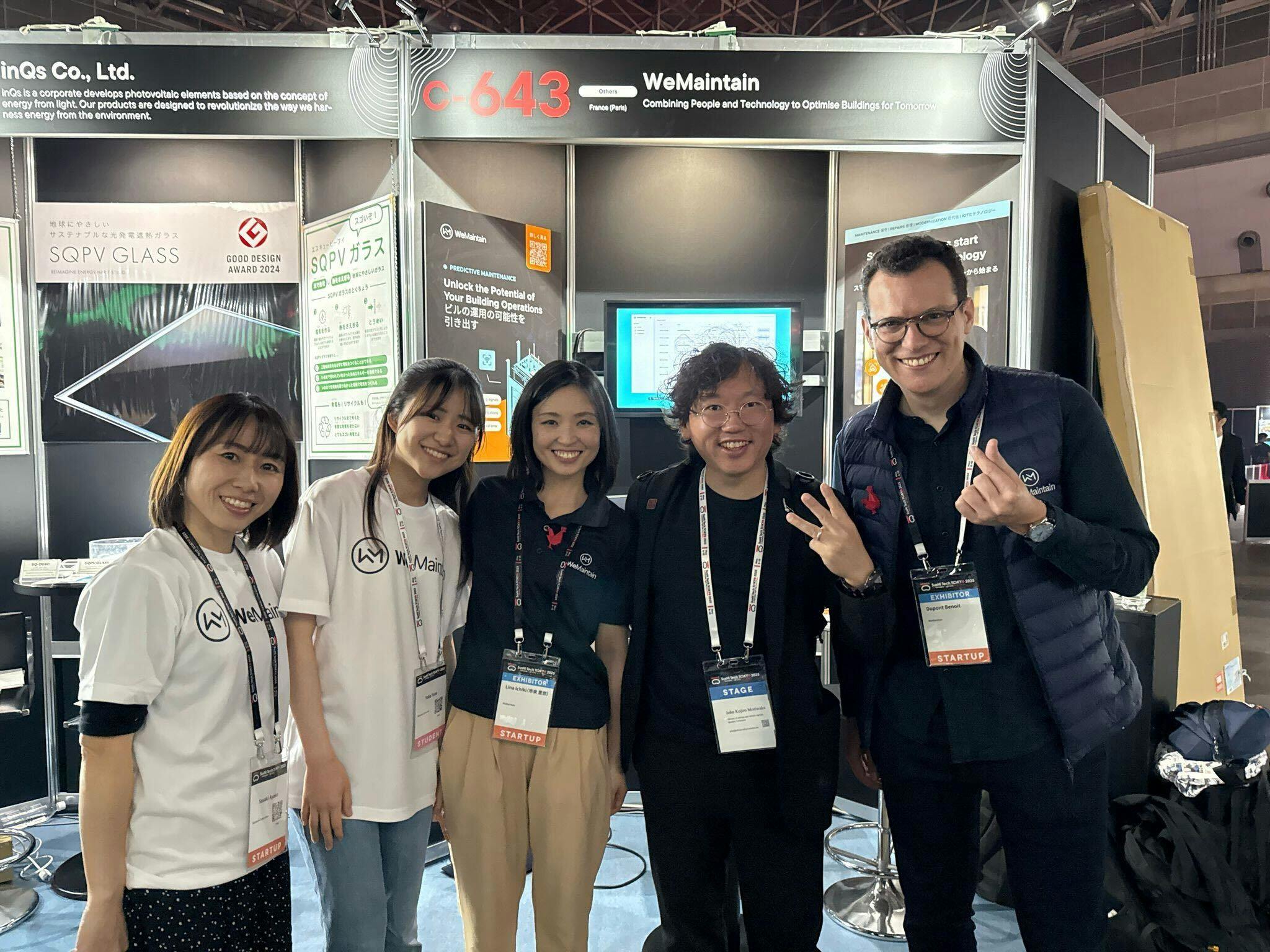
Maximize Meets Japan: Predictive Maintenance and the Future of Tech in Asia
On May 8-10 2025, Lina Ichiki (Lead Product Manager) and Benoit Dupont (CEO & Co-founder) had the opportunity to attend SushiTech 2025 in Tokyo, one of Asia’s most prominent technology conferences. With over 55,000 participants and a show floor packed with startups, global tech giants, and emerging innovators, the event offered a comprehensive look at the current and future state of tech across Asia and particularly Japan.
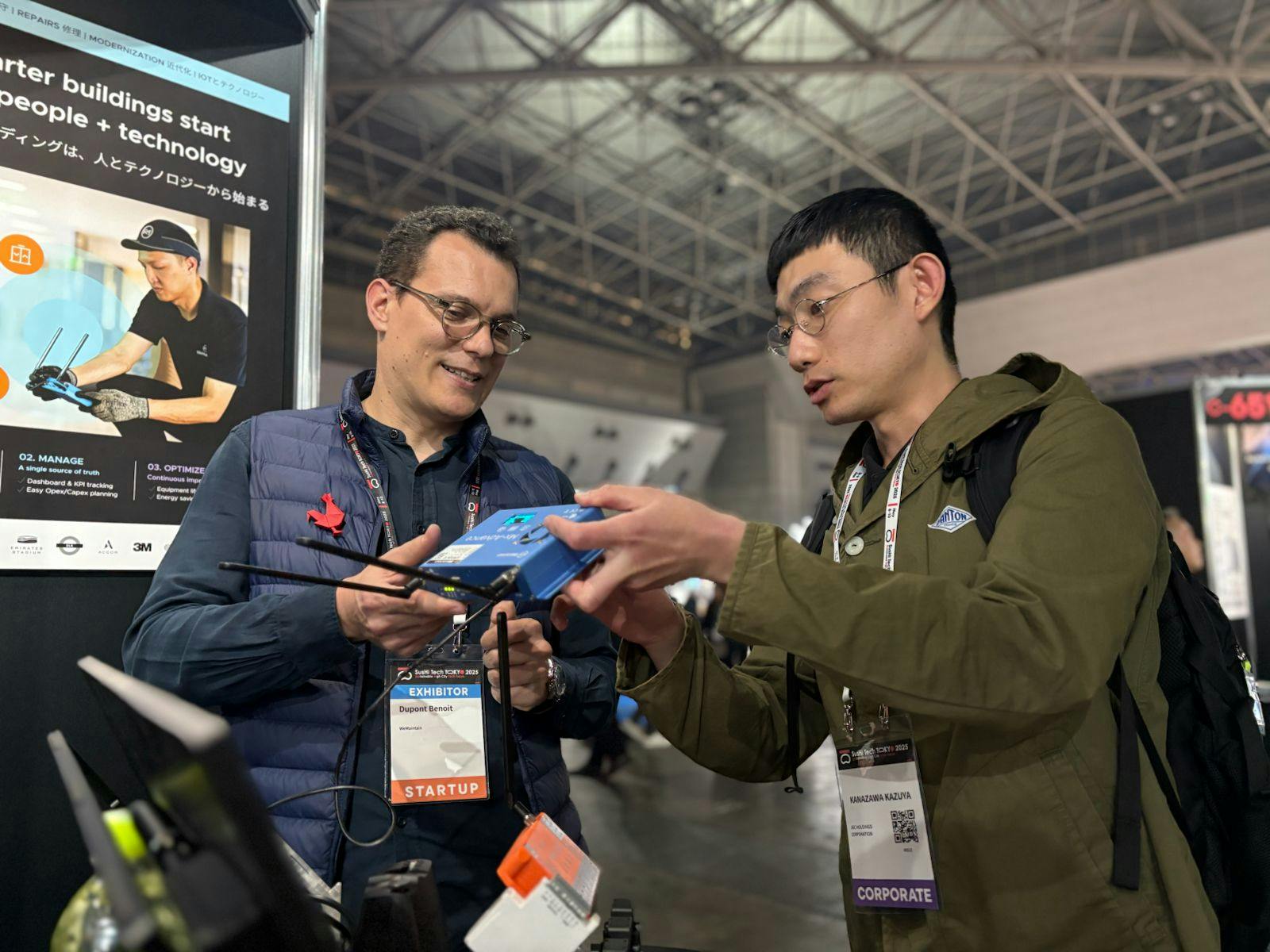
Why We Attended
For us, SushiTech was more than just another event. It was a chance to introduce our company and predictive maintenance solution, Maximize, to the Japanese market, and understand the dynamics, players, and needs of the region.
What we found was more than curiosity—there was deep technical interest. Many attendees wanted to understand the specifics of our technology:
⇒ How does Maximize work?
⇒ What kind of data do we collect?
⇒ What hardware is involved?
⇒ How does it all integrate?
This kind of interest was refreshing—and revealing. Compared to other markets, the technical fluency of attendees was noticeably higher, which led to thoughtful, nuanced conversations. It also raised the bar for how clearly and precisely we communicate our value.
Market Signals
It became clear during the event that Japan is ready—if not hungry—for predictive maintenance solutions. With aging infrastructure and a shrinking and aging workforce, many attendees acknowledged that their current approaches aren't sustainable long term. There’s a sense of urgency in finding smarter, more efficient ways to operate and that’s where we can play a role.
Along with OEMs looking for smarter approaches to maintenance, our solution has the potential to integrate seamlessly to the built environment. However, the path forward isn’t without complexity.
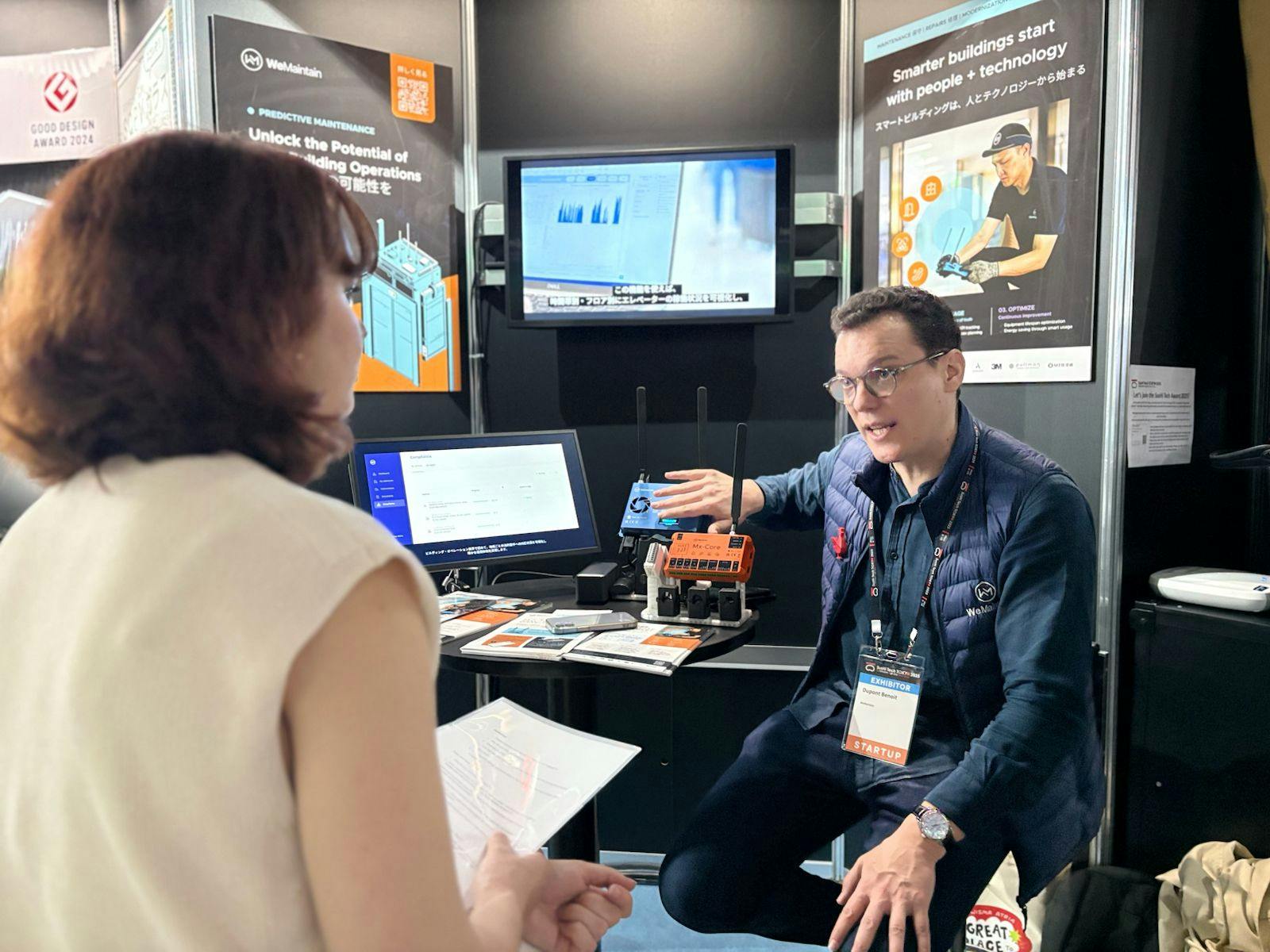
Innovation at the Forefront
The energy across SushiTech was palpable. Whether you were in a session on AI, hardware design, sustainability, or automation, the sense of regional innovation leadership was impossible to ignore.
Sustainability was a major focus. Many visitors asked how our platform could support energy efficiency, reduce CO₂ emissions, and fit into the existing supplier ecosystems — particularly in light of OEM relationships and warranty concerns. This speaks volumes about the maturity of the market and how forward-thinking companies are approaching their tech stack.
From government-backed startup programs in Japan to consulting support for market entry, the ecosystem is highly collaborative and increasingly open to global players. In contrast to some Western markets where competition is fierce and closed, Asia — and especially Tokyo — seems to be nurturing a supportive, partnership-oriented environment.
Our Experience on the Ground
You can’t talk about doing business in Japan without touching on the culture. Professionalism and hospitality stood out at every turn.
From the meticulously organised logistics of the event to the authentic, human connections we made — including an impromptu tea ceremony moment — the experience was memorable beyond the tech.
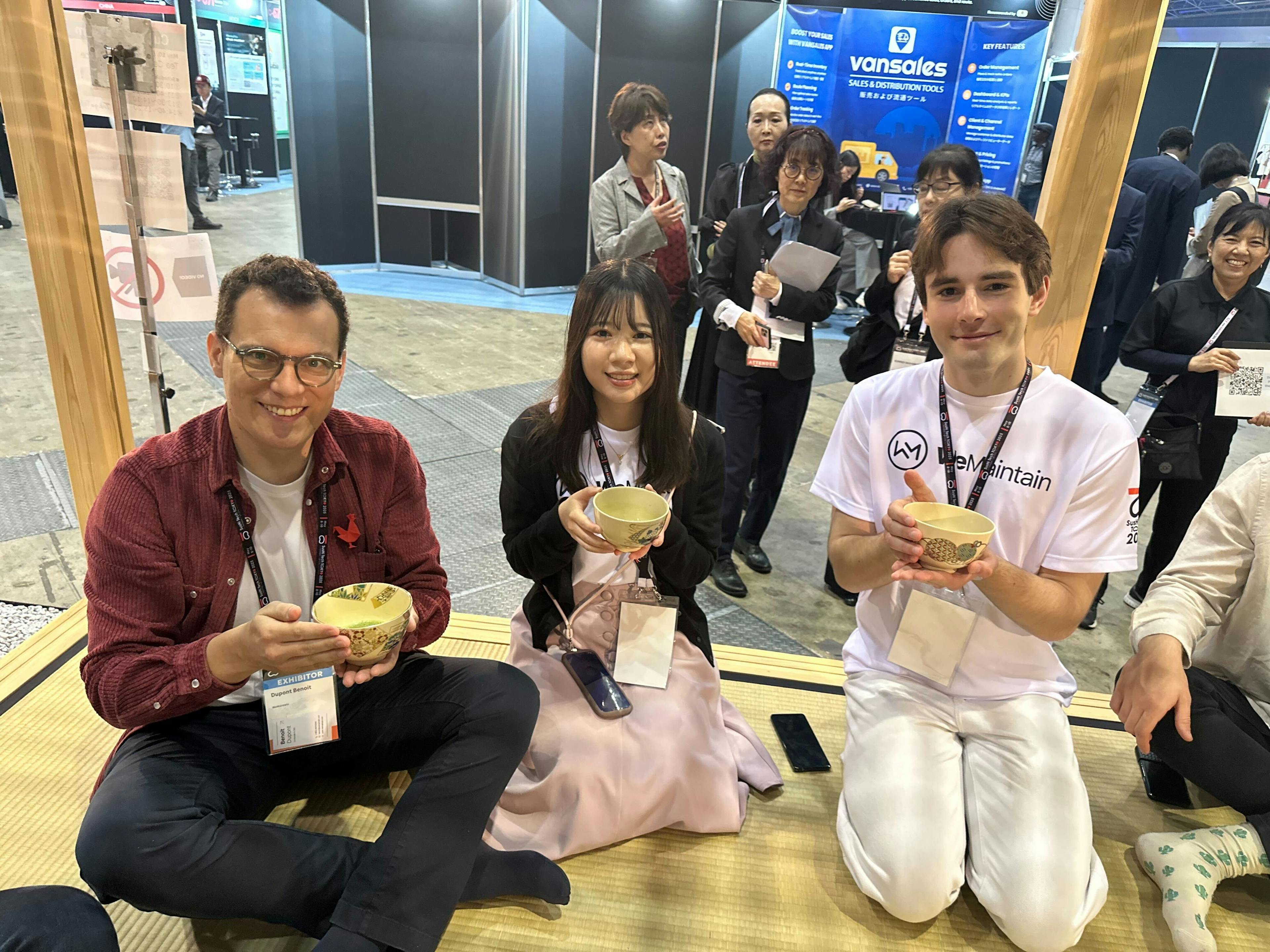
Networking was refreshingly structured and purposeful, with many attendees generously making introductions to consultants, clients, and government liaisons eager to help newcomers find their footing.
The Predictive Maintenance Landscape
While preventative maintenance standards are well established there’s strong demand for predictive maintenance, driven by labor shortages and infrastructure strain.
Ben had the opportunity to speak at Mitsui’s booth about how WeMaintain is empowering our clients with the insights to manage their buildings and assets more efficiently. As a company focused on predictive maintenance, this was our moment to both learn and contribute.
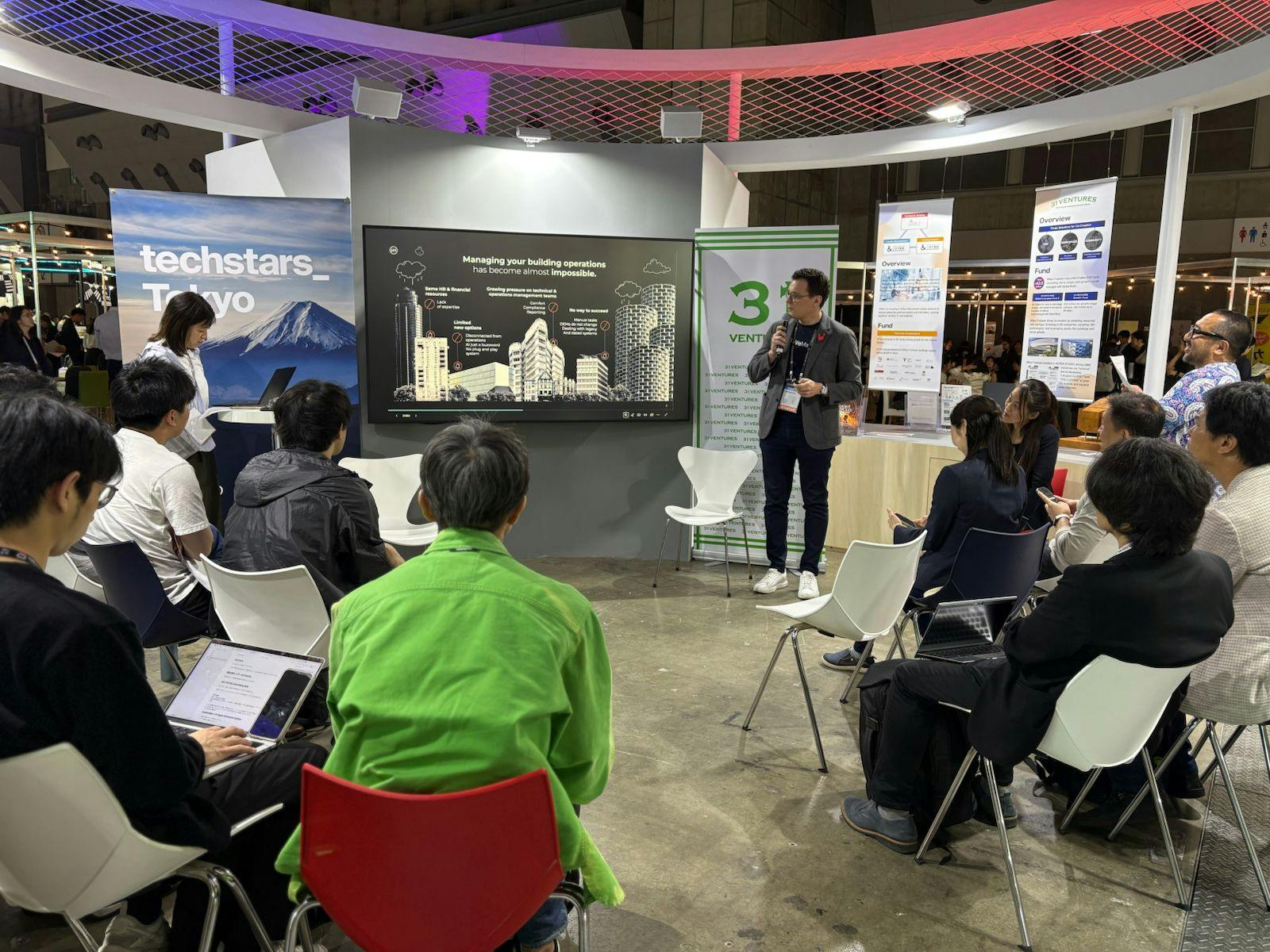
Ben's session highlighted the pain points in maintenance-heavy industries and how our technology helps optimise operations. There was strong engagement from attendees who saw predictive solutions as the natural next step—not just for efficiency, but for long-term viability.
While sectors like manufacturing and transport are already tech-saturated, industries like lift and escalator management still have room to evolve. That’s where we see major opportunity.
Yet, there are barriers too. In Japan, OEMs and management companies often dominate the value chain, and in some cases, engineers are incentivised to over-service equipment to maintain uptime, which for the user is great, however can become costly in the long-run for the asset owners. This creates a unique landscape—one that demands collaboration, not confrontation, with existing players.
Looking Ahead
To anyone considering attending SushiTech next year: go. Whether you're looking to break into Asia or benchmark your tech globally, it’s one of the best stages to be on.
Shoutouts & Thank Yous
A huge thank you to EMC Global, who helped us navigate the landscape and made our time in Japan productive and meaningful.

Let’s Connect
If you’re exploring predictive maintenance, energy efficiency, or innovation partnerships in Asia — we'd love to connect.
